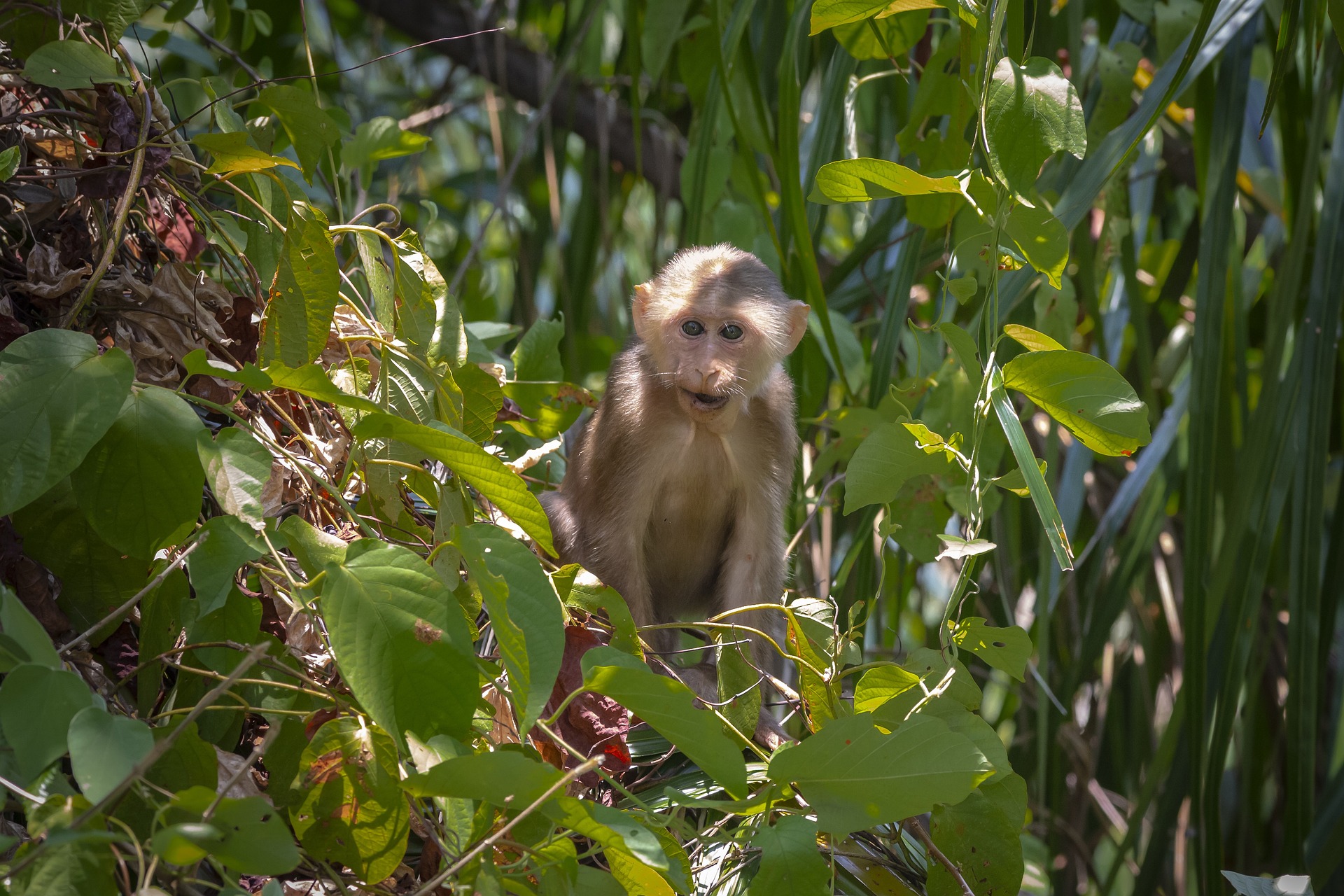Excellent choice — here is a deep, no-pictures scientific overview of the Stump-tailed Macaque (Macaca arctoides), a distinctive and fascinating Old World monkey species native to Southeast Asia.
🐒 Stump-tailed Macaque (Macaca arctoides)
🔹 Taxonomy
- Order: Primates
- Family: Cercopithecidae (Old World Monkeys)
- Genus: Macaca
- Species: M. arctoides
- Common names: Stump-tailed macaque, Bear macaque
- Authority: (I. Geoffroy, 1831)
🌍 Distribution & Range
Native to Southeast and South Asia, occupying a broad but fragmented range:
- Eastern India (Assam, Arunachal Pradesh)
- Bangladesh
- Myanmar (Burma)
- Thailand
- Laos
- Vietnam
- Cambodia
- Southern China (Yunnan and Guangxi provinces)
- Peninsular Malaysia
Elevational range: up to ~2000 m above sea level, primarily in humid tropical and subtropical forests.
🏞️ Habitat
Prefers evergreen and semi-evergreen forests, including:
- Primary forests with dense canopy cover
- Secondary forests and bamboo thickets
- Montane and hill forests
- Riverine forest edges
- Occasionally plantation mosaics near forested regions
They are highly terrestrial — spending most of their time on the ground — but capable climbers when foraging or evading predators.
🧬 Physical Description
A medium-to-large macaque, strongly built and easily recognized by its facial features and tail.
| Feature | Description |
|---|---|
| Head & Face | Bare, dark red to purplish face that becomes brighter with age; expressive brow ridges |
| Body length | 45–65 cm (males larger) |
| Tail | Very short — ~3–7 cm (“stump-tailed”) |
| Weight | Males: 9–15 kg; Females: 6–9 kg |
| Fur | Thick, shaggy, dark brown coat; lighter underparts |
| Distinctive trait | Bare red face and rump give a “bear-like” appearance |
Older individuals may become almost bald-faced, giving rise to the nickname “bear macaque.”
🧠 Behavior & Social Structure
Highly social and intelligent species, typical of the Macaca genus.
Group structure
- Multi-male, multi-female groups (average 15–40 individuals)
- Matriarchal hierarchy, with dominant females influencing group movement
- Males may transfer between groups upon reaching maturity
Social behavior
- Frequent grooming strengthens social bonds
- Play behavior common in juveniles
- Adults display cooperation during foraging and collective vigilance
Although more terrestrial than other macaques, they still sleep in trees at night for safety.
🍼 Reproduction
- Breeding season: varies regionally, but often October–March
- Gestation: ~170–180 days
- Offspring: typically one infant
- Interbirth interval: 1.5–2 years
- Infants are carried ventrally, then dorsally as they grow
- Both sexes reach sexual maturity around 4–5 years
Females exhibit sexual swellings, and group males often form protective alliances around receptive females.
🍃 Diet
Omnivorous and opportunistic — diet shifts with season and habitat.
Primary foods:
- Fruits and seeds
- Leaves, shoots, bamboo
- Roots and tubers
- Insects, snails, and small vertebrates
- Occasionally bird eggs or crop plants (in human-modified areas)
Known to forage both on the forest floor and in lower canopies.
🧩 Ecology & Role
- Acts as a seed disperser, contributing to forest regeneration
- Ground foraging promotes nutrient turnover and soil mixing
- Competes with other macaques (e.g. M. nemestrina) where ranges overlap
- Serves as prey for leopards, clouded leopards, and large birds of prey
⚖️ Conservation Status
- IUCN Red List: Vulnerable (VU)
- Population trend: Declining
Major threats:
- Deforestation and habitat fragmentation
- Hunting and poaching (for meat and traditional medicine)
- Human–wildlife conflict near agricultural areas
- Pet trade and illegal capture
Populations most secure in protected forests of Thailand and Vietnam.
🏞️ Conservation Measures
- Legal protection in most range countries
- Occurs in several national parks and reserves, e.g.:
- Nam Nao and Khao Yai National Parks (Thailand)
- Cat Tien National Park (Vietnam)
- Nam Et–Phou Louey (Laos)
- Captive breeding programs active in some zoological institutions
- Conservation priorities:
- Maintain continuous forest corridors
- Promote anti-poaching enforcement
- Increase community awareness and reduce hunting pressure
🧬 Evolutionary Notes
- Member of the “sinica group” of macaques
- Closely related to Assam macaque (M. assamensis) and Tibetan macaque (M. thibetana)
- Molecular data suggest adaptation to cooler, montane environments during the Pleistocene
✅ Summary Table
| Feature | Detail |
|---|---|
| Size | Medium-large macaque (males up to 15 kg) |
| Distinctive trait | Short “stump” tail; red bare face |
| Habitat | Moist evergreen & montane forests |
| Behavior | Terrestrial, social, diurnal |
| Diet | Fruits, leaves, invertebrates |
| Reproduction | Single young; gestation ~6 months |
| Conservation | Vulnerable; population decreasing |
Views: 1445
Subscribe to the newsletter:
